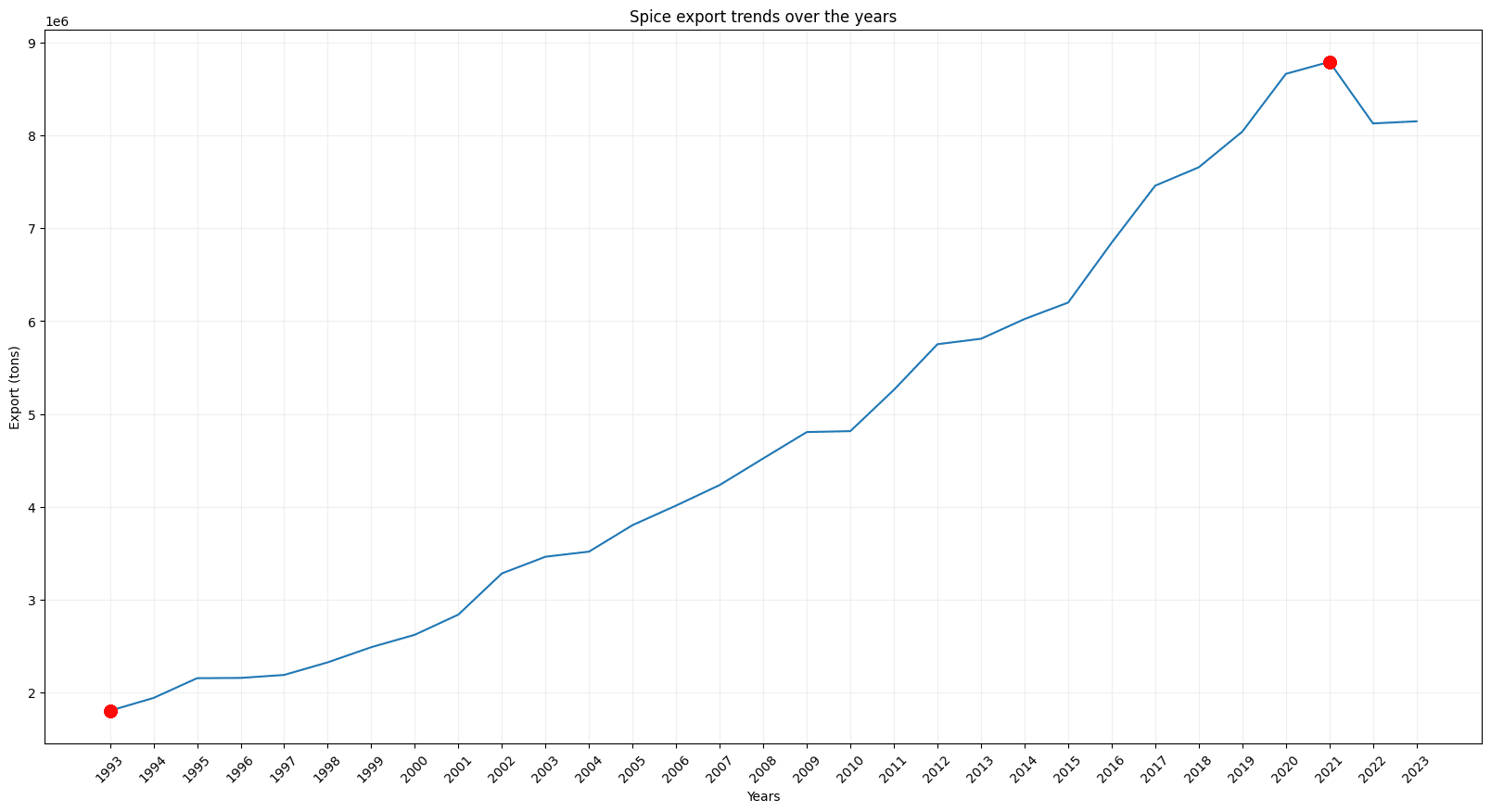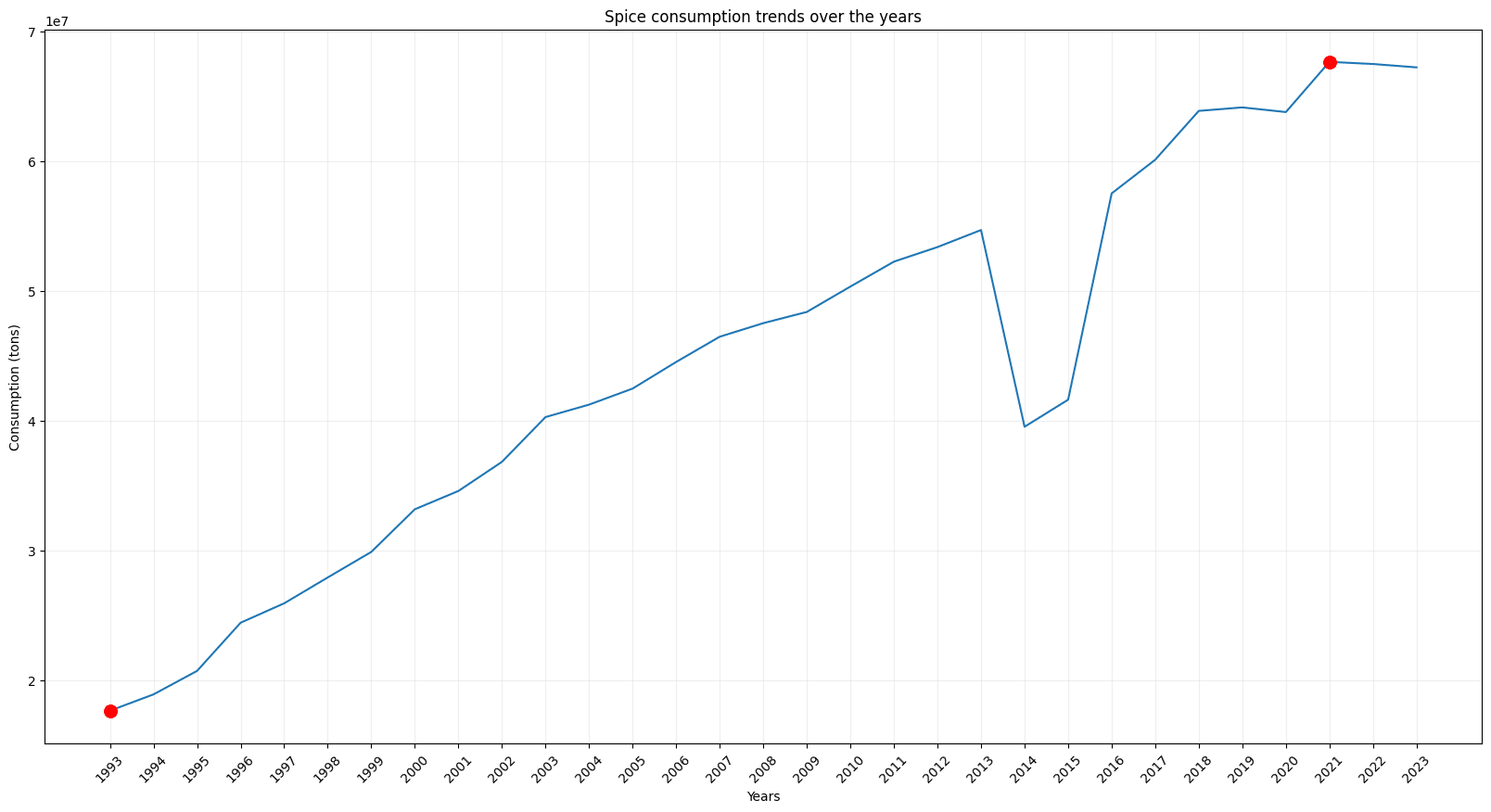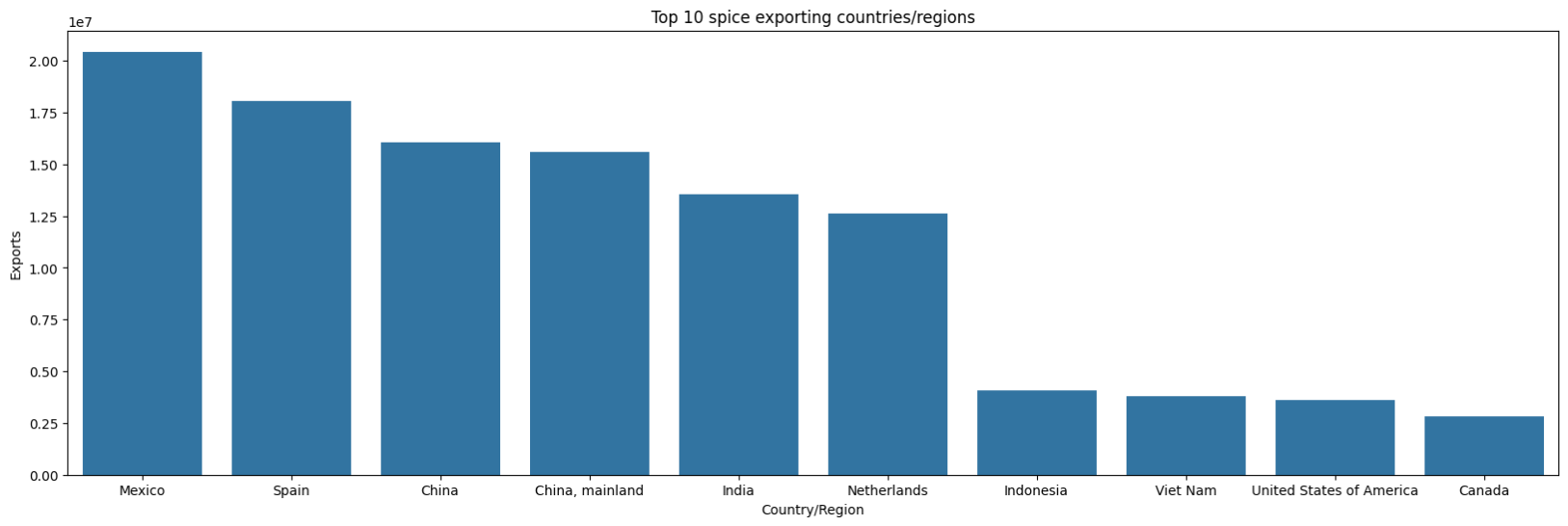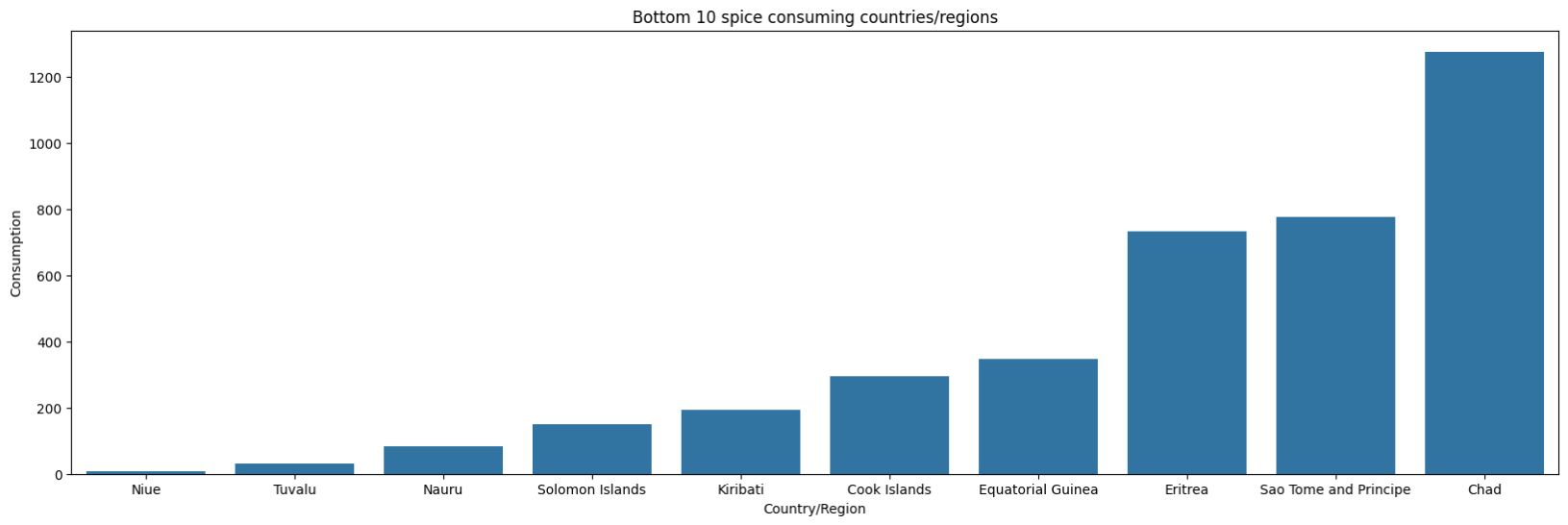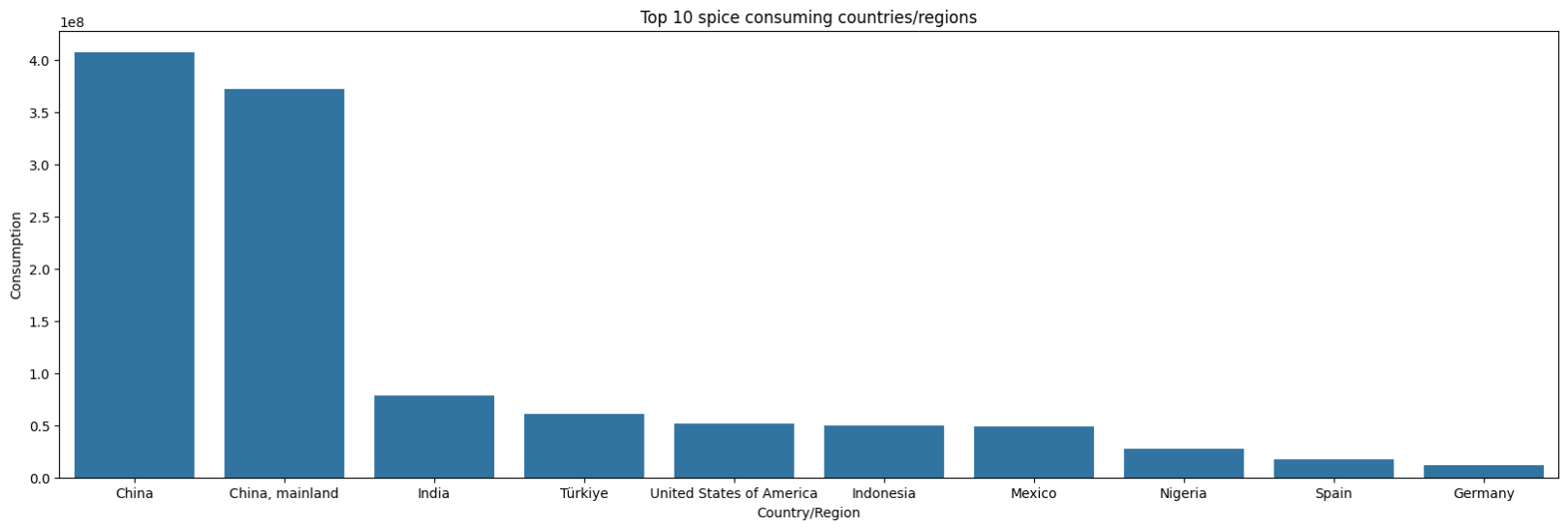Join Our 12th January 2026 Intake
Join, Learn & Innovate. Join our Data Science, Data Analytics & AI Engineering classes in January.
Global Spice Consumption, Production & Trade: Key Insights and Trends from 1993 to 2023
- 4 May 2025
- Posted by: Benedict Kiprono
- Category: Articles Data Storytelling
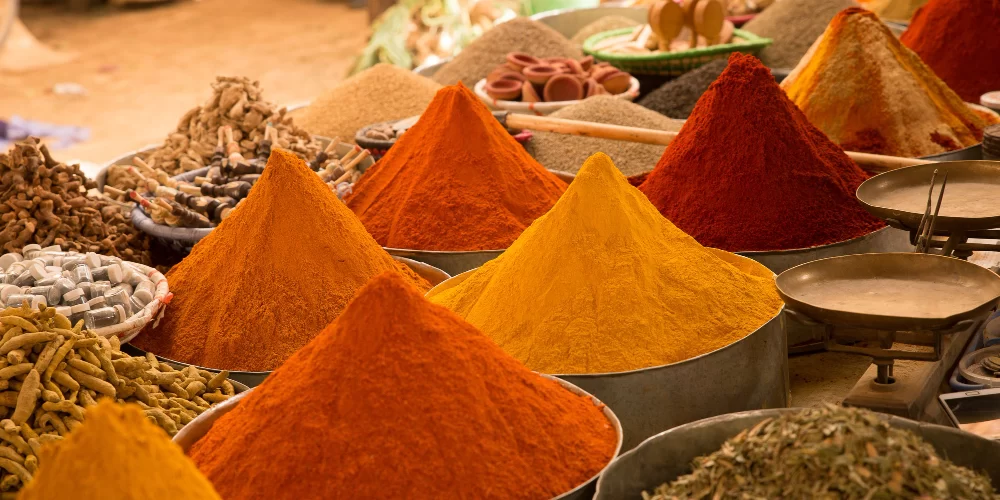
Introduction
Spices are not just culinary enhancers—they are economic powerhouses driving agriculture, trade, and industry across the globe. From the booming spice markets of India and China to the rising demand in North America, global spice consumption has seen remarkable shifts over the past three decades. This article analyzes the latest trends in global spice production, exports, and consumption, providing crucial insights for farmers, investors, traders, and policymakers. Whether you’re exploring market opportunities, identifying high-demand spices, or tracking global consumption patterns, this data-driven analysis has the insights you need.
- Key Insights from Global Spice Data (1993–2023)
- To identify the countries that produce the highest and those that produce lowest amount of spices.
- To identify the countries that have the highest and those with the lowest amounts of spice consumption.
- To identify the countries that import the highest and those that import the lowest amount of spices.
- To identify the countries that export the highest and those that export the lowest amount of spices.
- To identify the trends of spice production from the year 1993 to 2023.
- To identify the trends of spice consumption from the year 1993 to 2023.
- To identify trends in spice production per spice from the year 1993 to the year 2023.
- To identify trends in spice consumption per spice from the year 1993 to the year 2023.
- Key Insights from the Data
Country-Level Highlights
-
Top Consumer: China leads global spice consumption with a staggering 407.5 million tonnes.
-
Top Producer: China also tops the production chart with 420.7 million tonnes of spices.
-
Least Consumer and Producer: Niue records the lowest figures in both categories, consuming and producing just 8.49 tonnes.
-
Top Importer: USA leads spice imports with 29.8 million tonnes, indicating strong domestic demand.
-
Top Exporter: Mexico exports 20.4 million tonnes, leading in global spice distribution.
Country Leaders by Spice Type
-
India dominates the production and consumption of four major spice categories, including:
-
Chillies and peppers (dry)
-
Raw ginger
-
Raw nutmeg, mace, and cardamoms
-
Anise, badian, coriander, cumin, caraway, fennel, and juniper berries
-
-
China leads in green chillies and pepper consumption and production.
-
Indonesia stands out in cinnamon, cloves, and vanilla.
-
Vietnam is the top producer and exporter of raw pepper.
-
USA leads consumption of raw pepper (Piper spp.).
Export & Import Trends
-
Countries not exporting spices: Kiribati, Nauru, Tuvalu, and Niue.
-
Most exported spice types:
-
Chillies and peppers (dry) – High global demand
-
Raw ginger
-
Cinnamon, nutmeg, and cloves
-
Vanilla – lowest in global demand
-
Historical Trends (1993–2023)
Consumption:
-
Peak Year: 2021 with 68 million tonnes consumed.
-
Lowest Year: 1993 with just 17 million tonnes.
-
Notable Drop: A 15 million tonne decrease in 2014, followed by rapid growth until 2018.
Production:
-
Peak Production: Also in 2021, with 68.5 million tonnes.
-
Lowest Production: 1993 with 18 million tonnes.
-
Recovery: Sharp increases after dips in 2013 and 2014.
Exports:
-
Peak Exports: 2021 with 8.9 million tonnes.
-
Lowest Year: 1993 with 1.9 million tonnes.
-
Recent Plateau: Export levels have stabilized since 2022.
- Data-Driven Recommendations
For Farmers
-
Focus on High-Demand Spices: Prioritize cultivating dry chillies and peppers, ginger, and raw pepper for maximum market potential.
-
Capitalize on Local Strengths: Countries like India, China, and Indonesia should continue to invest in spices they already dominate.
For Spice Traders and Retailers
-
Import to High-Demand Markets: Target USA and China, which show significant import volumes.
-
Export Opportunities: Nations like Mexico, India, and Vietnam should expand export operations for trending spices.
For Investors
-
Processing Factory Location: Build near top producing countries (India, China, Indonesia) to lower raw material costs and maximize output.
-
Invest in Supply Chain Infrastructure to address export plateaus and create logistical efficiencies.
For Governments
-
Boost Spice-Focused Agriculture: Allocate land and resources to high-performing spice crops.
-
Support Export Growth: Develop trade partnerships for spices with growing demand, especially in North America and Europe.
- Charts
- Want to Build Projects Like This?
Join our community and start learning Data Analytics, Machine Learning, and more, from zero to career-ready.
Leave a Reply Cancel reply
Need help? Our team is just a message away

